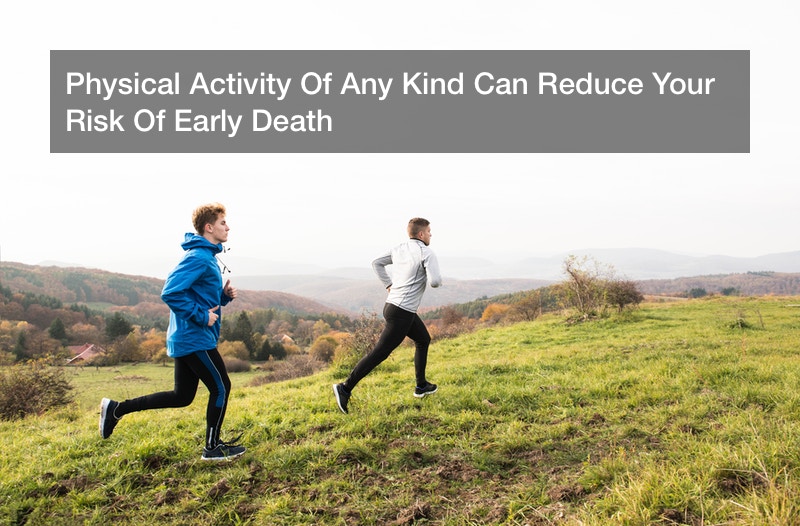
Any type or amount of physical activity reduces the health risks associated with sitting, new research shows. According to a new study of 8,000 middle-aged and older adults, substituting 30 minutes of sitting with physical activity of any kind can reduce the risk of early death by 35%.
The study, published in the American Journal of Epidemiology, found that movement is important for better health regardless of the intensity or amount of time spent moving.
“Our findings underscore an important public health message that physical activity of any intensity provides health benefits,” said the lead author of the study Dr. Keith Diaz. Diaz is the assistant professor of behavioral medicine at Columbia University Vagelos College of Physicians and Surgeons.
“If you have a job or lifestyle that involves a lot of sitting, you can lower your risk of early death by moving more often, for as long as you want and as your ability allows,” said Diaz, “whether that means taking an hour-long high-intensity spin class or choosing lower-intensity activities, like walking.”
Less than one-third of children get 25 minutes of physical activity three times a week, and one in four adults spends over eight hours a day sitting. Adults who sit for an hour or more at a time without interruption are at greater risk of early death compared to those who got up and moved during that same amount of time.
Adults who sat for less than 30 minutes at a time or less had the lowest risk of early death. This suggests that taking movement breaks every 30 minutes can lower your risk of chronic health conditions and early death.
Diaz’s study included 7,999 participants age 45 and older. The participants took part in a nationwide analysis of racial and regional disparities in strokes between 2009 and 2013.
Participants wore activity monitors for four days. During that time, their physical activity and the intensity of those activities were recorded. Diaz and researchers then analyzed the death rate of the participants after four years in 2017.
Researchers found that when adults replaced 30 minutes of sitting with low-intensity physical activity they reduced their risk of dying by 17%. Moderate physical activity could reduce their risk by 35%. Even short bursts of activity (one to two minutes) showed health benefits.
Although researchers found that increased physical activity could reduce the risk of dying from any cause, Diaz and his team didn’t look into specific health-related outcomes.
“In our next study, we plan to look at the risk of specific cardiovascular outcomes, such as heart attack, heart failure, and cardiovascular-related deaths, associated with physical activity versus sedentary behavior,” said Diaz.
Previous studies on specific health-related issues show that inactivity can be a major risk factor. For instance, the average woman in the U.S. has a one-in-eight lifetime risk of being diagnosed with breast cancer. That risk increases when a woman is physically inactive.
Fortunately, a new breath test for cancer screening is currently undergoing clinical trials. The test involves measuring a patient’s breath for volatile organic compound (VOC) emissions. VOCs are typically found in gasoline, wood, coal, and paint (but not in powder coatings).
VOCs can also be found in human breath, but they change when a person has cancer. The new breath test aims to identify these changes to diagnose cancer. But it’s still vital to reduce your risk of cancer and other chronic health conditions by staying physically active and eating well.
It’s also essential to get enough sleep. Sleep deprivation can be just as damaging as little physical activity. On average, school-aged children only receive 9.5 hours of sleep and adults only receive 6.8 hours.
Sleep deprivation can increase your risk for chronic health conditions such as cardiovascular problems, heart disease, diabetes, and stroke.
That said, to reduce your risk of early death, experts recommend moving more frequently, getting the recommended amount of sleep, and eating a healthier diet.
“Getting up and exercising 10 minutes a day will help you mentally,” said Jimmy McCurry, owner of Progressive Performance gym. “Will it help your muscle mass grow or density? We need a longer duration for that.”

